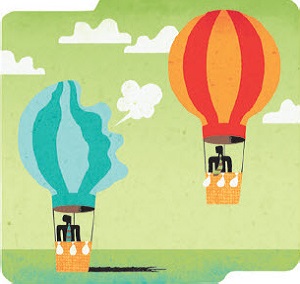When baseball great Yogi Berra noted that "a nickel ain't worth a dime anymore," he was restating a central fact of economics: Inflation erodes the purchasing power of money. By extension, we need to adjust interest rates for inflation to understand their value over time. The nominal interest rate is the stated rate you pay on a loan, or that a bank pays on a deposit. The real interest rate is the nominal rate adjusted for the change in purchasing power over time, or inflation. The real interest rate is what truly affects borrowing, lending, and investment.
One of the first economists to closely examine the interaction between interest rates and inflation was Irving Fisher (1867-1947). He concluded that inflation and nominal rates are closely associated: When the money supply goes up, both inflation and the nominal interest rate rise in the long run, a relationship known as the Fisher effect.
Even though inflation and nominal rates are closely tied, real and nominal interest rates can diverge, namely, when prices change quickly and dramatically. For example, when U.S. inflation (as measured by the consumer price index) began picking up in 1973, nominal interest rates went up while real rates fell, as inflation rose more quickly than nominal rates. Real interest rates fell below zero and generally stayed there until 1980, when nominal rates (as measured by the three-month Treasury bill) reached 15 percent. Then inflation finally began to fall. By autumn 1983, the real interest rate had risen to more than 4 percent (compared with a 9 percent nominal interest rate), as inflation fell more rapidly than nominal interest rates.
Conversely, deflation will push real interest rates above nominal interest rates. Japan has held nominal interest rates near zero since the mid-1990s, while its economy has gone through spells of deflation. In 2013, for example, when the average bank deposit interest rate was 0.5 percent, Japan's real interest rate reached 1.9 percent, according to the World Bank. In such cases, economists become concerned that relatively high real interest rates will dampen growth in an environment that is already trending toward deflation.
The real interest rate reflects the true return on savings as well as the true cost of investment and therefore is the key rate that influences the economy. For example, an investor assessing a capital investment decision makes that calculation by adjusting the rate of return for expected inflation. However, as many economists, including former Fed Chairman Ben Bernanke, point out, monetary policy does not determine the real interest rate in the long run. Rather, a range of factors, including an economy’s potential for growth and the productivity of its workforce, establish the real rate over the medium to long term. Under a concept introduced in 1898 by the Swedish economist Knut Wicksell, this long-run rate is where the real interest rate settles when labor and capital are fully utilized, a condition known as the equilibrium or "natural" interest rate. In a robust economy, the equilibrium rate is high because the return on investment is high, while the opposite holds in a sluggish economy. For central bankers, Bernanke argued recently on his blog, the goal is to influence market rates so that they match up with the equilibrium rate.
Today, economists are engaged in a debate over how to measure the equilibrium rate, including which variables to use and how to disentangle long-run factors from short-term ones. Richmond Fed economists Thomas Lubik and Christian Matthes recently analyzed three variables — real gross domestic product growth, the core personal consumption expenditures inflation rate (adjusted for energy- and food-price fluctuation), and the real interest rate — and found that the natural rate has fallen from about 3.5 percent in the early 1980s to 0.5 in the second quarter of 2015, while never dropping below zero. In their calculation, the natural rate has stayed above the real rate since 2009, which can support the idea that monetary policy may have been too loose.
While the best measure of the real natural rate is under debate, a longer-term trend is clear: Both real and nominal rates have been falling across the globe. Some drivers are transitory factors tied to the financial crisis response, such as quantitative easing policies (which lowered long-term bond yields) and private-sector deleveraging (which dampened consumption). But this drop started well before 2008 (in some countries, it began as early as the 1980s) and has also affected long-term rates. For these reasons, argue some economists, the trend is a sign of factors that are bound to persist for a while. Possible explanations include expectations of sluggish long-term growth, especially in China, and slowing global productivity. Demographics are also in play, as aging populations save more and spend less. Meanwhile, Bernanke has pointed to a "savings glut" in emerging markets, especially in Asia, while former Treasury Secretary Lawrence Summers has argued that a trend known as "secular stagnation" is at work, in which aggregate global demand has become suppressed. In short, the persistence of low rates can be a good thing — cheaper borrowing for public and private investment, for example — but it could also be a symptom of underlying economic fragility.





